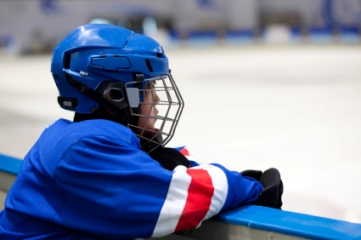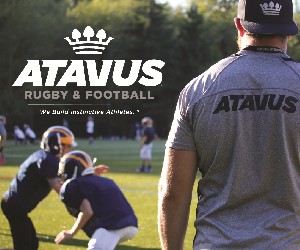2. Rule Enforcement/Changes
The most recent international consensus statement on concussion in sport [20] states that "consideration of rule changes to reduce the head injury incidence or severity may be appropriate where a clear-cut mechanism is implicated in a particular sport."
Football
Recent years have seen stricter enforcement of existing rules and numerous rule changes at the professional, college and high school level, all designed, at least in theory, to reduce the risk of concussion and long-term injury, such as chronic traumatic encephalopathy (CTE), including:
- moving kickoffs from the 30- to 35-yard line in the NFL (which data suggests has reduced concussions on kickoffs by 50%);
- banning the wedge on kickoffs;
- prohibiting helmet-to-helmet contact and helmet-first hits on defenseless players above the shoulders (NFL, NCAA);
- penalizing players who lower their heads and expose the crown of their helmets to make a tackle (NFL);
- stiffening the penalty for so-called "targeting fouls," including targeting and initiating contact with the crown of the helmet, targeting and initiating contact to the head or neck area of a defenseless opponent with the helmet, forearm, elbow or shoulder (while already illegal, the penalty has been stiffened to include automatic ejection plus the 15-yard penalty. (NCAA)
- subjecting players to the risk of being ejected from the game for a launch (leaving his feet to attack an opponent by an upward and forward thrust of the body to make contact in the head or neck area); a crouch (followed by an upward and forward thrust to attack with contact at the head or neck area); leading (with helmet, forearm, fist, hand or elbow to attack with contact at the head or neck area); or lowering (the head before attacking by initiating contact with the crown of the helmet)(NCAA).
- a 2012 NFHS rule requiring that a player whose helmet comes off during play to sit out at least one play, which is intended to encourage coaches and equipment managers to make sure helmets fit properly (poorly fitted or helmets with improperly inflated air bladders increases the risk of concussion and more serious brain trauma, say the authors of a recent scientific paper); and
- 2013 NFHS rule penalizing football players who intentionally make contact with the head of a player whose helmet has come off during play.
But tougher enforcement is needed, particularly of rules against helmet-to-helmet contact. A 2014 study finding that most top-of-the-head impacts causing concussion in high school football occurred when players had their heads down [30] is just the latest in a string of studies calling for better enforcement of that rule.
Recent years have seen greater emphasis on efforts to penalize illegal hits at all levels of football, but much more enforcement is needed. Some suggest that, if an official is unsure whether an illegal hit has occurred, they should err on the side of caution by calling a penalty. "You can look at a hold a hold and say it didn't affect the play and pass on that," a veteran college official and Texas high school football rules interpreter, Cooper Castleberry, recently told The Dallas Morning News. "You can't do that on a targeting foul. You can get somebody injured for life with something like that. If there's any doubt in your mind," he suggests to referees that they "go for it. That's the attitude refs need to have."
Some concussion experts are also suggesting new rules be adopted to better protect football players against head injuries. "We've got to look at rules and rule enforcement and maybe even rule creation," said Gerard Gioia, Ph.D., Division Chief in Pediatric Neuropsychology and Director of the Concussions - Safe Concussion Outcome Recovery & Education (SCORE) Program at Children's National Medical Center in Washington, D.C., at the Aspen Insitute's November 2012 football roundtable. "From my perspective in football, a rule that would suggest that if you make no effort to wrap in a tackle, then a flag gets thrown because otherwise you're just using your body as a torpedo."
One rule that should be adopted immediately at all levels of football is the one passed by NFL owners on March 20, 2013 banning ball carriers in the open field from lowering their head and exposing the crown of their helmet.
Hockey
 Because the risk of concussion triples among younger hockey players in leagues where body checking is allowed, [7] USA Hockey has banned the practice at the Pee Wee level (11- and 12-year olds), and in 2013 body checking was also banned in Canada. in Pee Wee hockey. In his 2012 book, "Concussion and Our Kids," [8] Dr. Robert C. Cantu recommends that bodychecking only be allowed after age 14; a ban until age 15 is supported by the Canadian Paediatric Society and other groups, and a leading Canadian concussion expert, Dr. Charles Tator, goes one step further: he argues for a ban in bodychecking until age 16.
Because the risk of concussion triples among younger hockey players in leagues where body checking is allowed, [7] USA Hockey has banned the practice at the Pee Wee level (11- and 12-year olds), and in 2013 body checking was also banned in Canada. in Pee Wee hockey. In his 2012 book, "Concussion and Our Kids," [8] Dr. Robert C. Cantu recommends that bodychecking only be allowed after age 14; a ban until age 15 is supported by the Canadian Paediatric Society and other groups, and a leading Canadian concussion expert, Dr. Charles Tator, goes one step further: he argues for a ban in bodychecking until age 16.
"Those are important years for the brain to develop normally for a full life," said Dr. Tator in an interview with Global News. "To have it bashed around by bodychecking is just not a good idea."
"The brain has billion of cells and those cells are all connected in very precise ways. During adolescence a lot of those connections are being made," said Dr. Tator. "So if you have repeated concussions, that means those connections aren't going to be made. Some people with multiple concussions will have life long consequences."
At levels where checking is allowed, the risk of concussion and catastrophic injury in hockey could be reduced not only by strictly enforcing existing rules against such violent and dangerous infractions as checking from behind, boarding and contact to the head, but by stiffening the penalties for such infractions, as the Minnesota State High School League recently did in the wake of the several high-profile catastrophic injuries to hockey players in the state.
Soccer
One leading concussion expert suggests that heading in soccer be delayed until age 14. In his 2012 book, Concussion and Our Kids, Dr. Robert C. Cantu acknowledges that "[w]e can't say whether heading a soccer ball over and over for many years increases a person's risk of one day developing chronic traumatic encepholapathy, but he says, "We can say with authority that if heading simply vanished from youth soccer the sport would go from being risky from the standpoint of head truma to one of the safest." The reason, says Cantu, isn't trauma from head meeting ball, but rather from head meeting head, or elbow, or shoulder.
On that point, the statistics, at least in high school soccer, support Cantu's assertion, with a recent study of concussions in high school sports [3] reporting that heading the ball was the activity most frequently associated with concussion (31.1% for boys, 27.7% for girls), that 60.8% of injuries sustained by heading the ball were concussions, and that concussions sustained while heading the ball occurred as a result of player-to-player contact (boys: 74.2%; girls: 58.1%), player-equipment contact (i.e. goalpost)(boys: 12.9%; girls: 34.9%) and player-playing surface contact (boys: 12.9%; girls: 7.9%).
concussions in high school sports [3] reporting that heading the ball was the activity most frequently associated with concussion (31.1% for boys, 27.7% for girls), that 60.8% of injuries sustained by heading the ball were concussions, and that concussions sustained while heading the ball occurred as a result of player-to-player contact (boys: 74.2%; girls: 58.1%), player-equipment contact (i.e. goalpost)(boys: 12.9%; girls: 34.9%) and player-playing surface contact (boys: 12.9%; girls: 7.9%).
In terms of the long-term effects of heading in soccer, a new study linking frequent heading of a soccer ball with changes to the white matter of the brain and poorer performance on a neurocognitive test of memory [29] is likely to add fuel to the fire of a 30-year-old debate about the effects of heading.
The study by researchers at the Albert Einstein College of Medicine in New York is believed to be the first to quantify subconcussive heading and to assess the association of heading with imaging evidence of brain injury and impaired neurocognitive function.
The findings suggest that may be a heading threshold above which the risk of short- and possibly long-term brain injury dramatically increases.
Establishing such thresholds, the scientists say, could ultimately lead to identification of a 'head count' (see #7 below) above which a player's heading should be curtailed for a specific recovery period, an approach akin to the pitch counts implemented in youth baseball to reduce the risk of arm injuries, and an approach that has been proposed by some concussion experts as a way of reducing the risk of long-term brain injury from repetitive head impacts in contact and collision sports. (For more on the proposal by Dr. Cantu and others to modify the rules of soccer to ban heading at levels below U-14, see #7 below)
[Update: On November 9, 2015, U.S. Soccer, the national governing body for soccer in the U.S., announced that it was banning heading for ages 10 and below and imposing limits on heading in practices for athletes ages 11 through 13. Those rules apply only to development programs and academies under its control; for youth soccer programs it does not directly control, the rules are recommendations.]
Lacrosse
A 2013 study [5] found that in 19 out of 34 (56%) player-to-player collisions resulting in concussions in boys' high school lacrosse, the struck player did not appear to anticipate contact and was deemed "defenseless" (defined by US Lacrosse, the National Football League, and National Hockey League rules as a struck player who was "blind-sided" or unable to see and therefore anticipate and prepare his or her body for an impending collision), but penalties were called in 26.5% of the time.
The study's findings were consistent with those showing that the majority of injuries in boys' high school lacrosse, and specifically concussions, were the result of player-to-player contact, which were considered "legal" collisions in that no penalty was called in 70% of the head injury cases analyzed.
"The absence of penalty calls on most of these plays suggests an area for exploration, such as the extent to which rules governing player to player contact are enforced and how effective these rules are for the prevention of head injury at various levels of the sport," the study concluded.
As in boys' hockey and football, rules against intentional contact to the head are only as good as the officials charged with enforcing them. Commenting on the study in an email to MomsTEAM, Steve Stenersen, CEO of US Lacrosse, expressed support for the study's recommendation about ways to reduce concussions in the sport, expressing the view that "violent collision should be removed from boys'/men's lacrosse."









